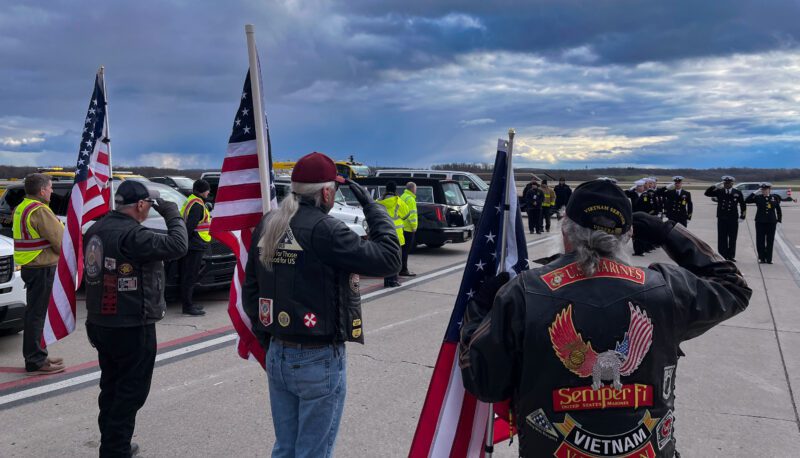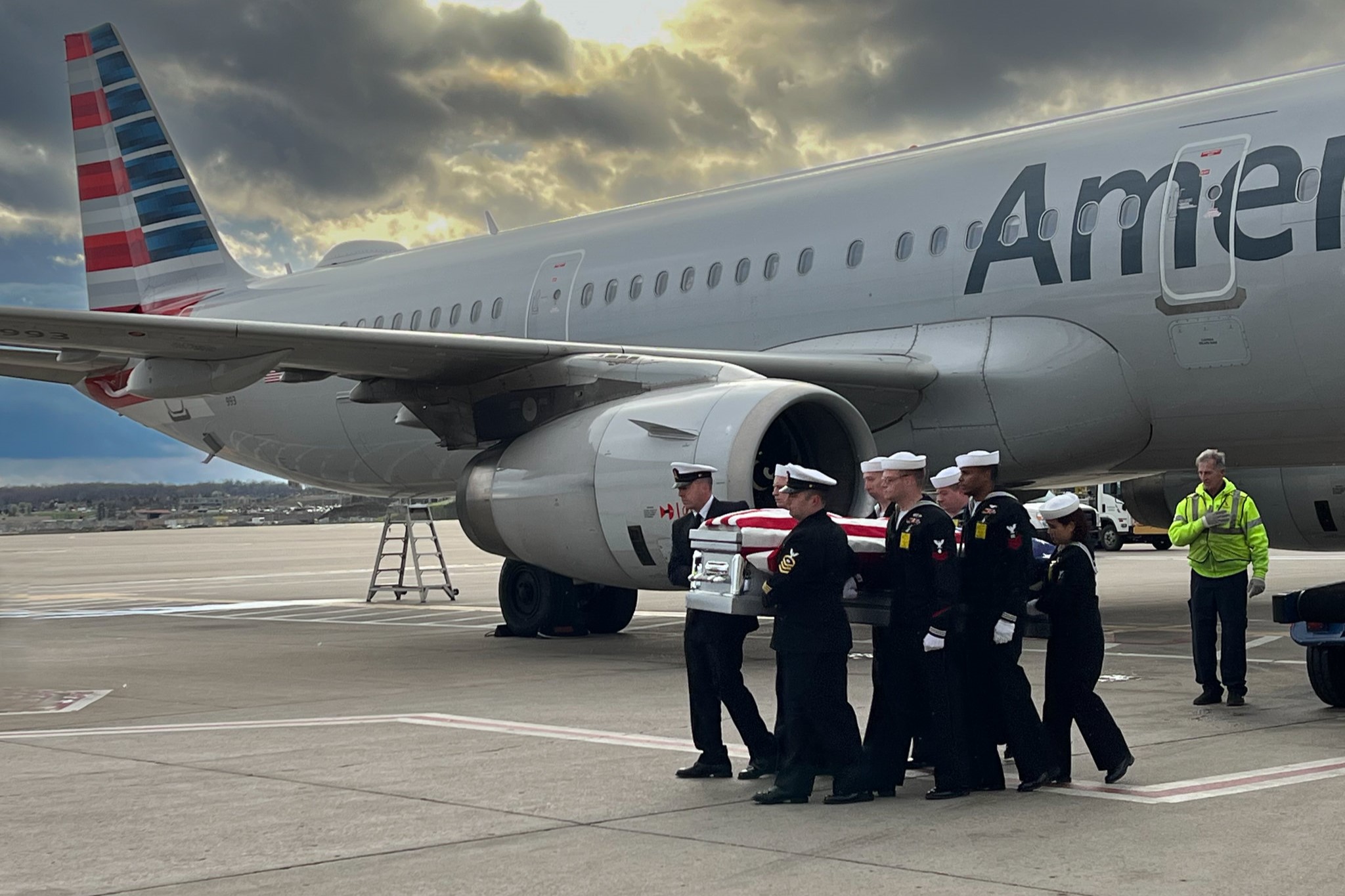WWII Sailor Killed in Pearl Harbor Attack Honored at PIT
Navy firefighter serving aboard USS Oklahoma comes home
By Bob Kerlik
Published April 8, 2024
Read Time: 3 mins
It’s been nearly 83 years since Walter Schleiter was killed during the Japanese attack on Pearl Harbor while serving aboard the USS Oklahoma.
On Friday, his remains — recently positively identified by the Department of Defense — finally made it back it back to the state in which he was born.
Arriving on an American Airlines flight from Hawaii to Dallas and then to Pittsburgh, Schleiter’s flag-draped casket was honored by Navy, USO and airline personnel, Pittsburgh International Airport leadership, firefighters and other staff as well as Allegheny County Police.
Those in uniform saluted while civilians placed their hands over their hearts as a Navy honor guard met the plane on the apron as it pulled into the gate. The honor guard later carried the casket into a waiting hearse. Patriot Guard Riders stood watch and saluted with large American flags lined next to the plane as a welcome home.
Schleiter will be buried April 11, 2024, at the National Cemetery of the Alleghenies as a final resting place.
Pittsburgh International Airport helps coordinate the arrival of fallen service members with the airline, the military and the USO among other organizations. Brittany Long, Pittsburgh center operations manager for the USO, said all parties involved work as a team to ensure arrivals are done honorably.
“It’s important all across the board that this is done in an honorable way,” Long said. “The service member who gave their life deserves to come home to an honorable welcome.”

Patriot Guard Riders salute U.S. Navy honor guard members following the arrival of Walter Schleiter at Pittsburgh International Airport on April 5, 2024. (Photo by Bob Kerlik)
Identification breakthrough
Schleiter was born in Freedom, Pennsylvania, and grew up in Massillon, Ohio, before he enlisted in the Navy in August 1940. On the morning of Dec. 7, 1941, he was assigned to the Oklahoma, which was moored at Ford Island, Pearl Harbor, when the ship was attacked by Japanese aircraft.
The ship sustained multiple torpedo hits, which caused it to quickly capsize. The attack resulted in the deaths of 429 crewmen, including Schleiter, who was 22 years old. He had enlisted a year earlier and worked his way up to fireman first class two months before the attack.
The identification of Schleiter and many others is the result of work by the U.S. Defense POW/MIA Accounting Agency (DPAA). From December 1941 to June 1944, Navy personnel recovered the remains of deceased crew, which were subsequently interred in the Halawa and Nu’uanu cemeteries in Hawaii.
In September 1947, tasked with recovering and identifying fallen U.S. personnel in the Pacific Theater, members of the American Graves Registration Service (AGRS) disinterred the remains of U.S. casualties from the two cemeteries and transferred them to the Central Identification Laboratory at Schofield Barracks in Hawaii.
The laboratory staff was only able to confirm the identifications of 35 men from the USS Oklahoma at that time. The AGRS subsequently buried the unidentified remains in 46 plots at the National Memorial Cemetery of the Pacific (NMCP), known as the Punchbowl, in Honolulu.
In October 1949, a military board classified those who could not be identified as non-recoverable, including Schleiter.
Between June and November 2015, DPAA personnel exhumed the USS Oklahoma Unknowns from the Punchbowl for analysis. To identify Schleiter’s remains, scientists from DPAA used dental and anthropological analysis. Additionally, scientists from the Armed Forces Medical Examiner System used mitochondrial DNA (mtDNA) analysis.
Schleiter’s name is recorded in the Courts of the Missing at the Punchbowl, along with the others who are missing from WWII. A rosette will be placed next to his name to indicate he has been accounted for.
Watch
This Next
Read
This Next






